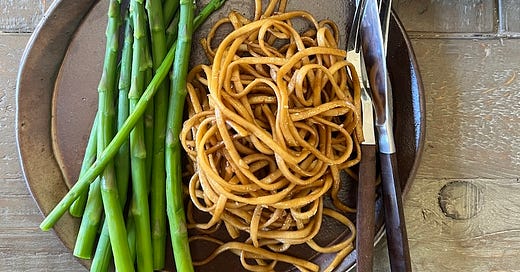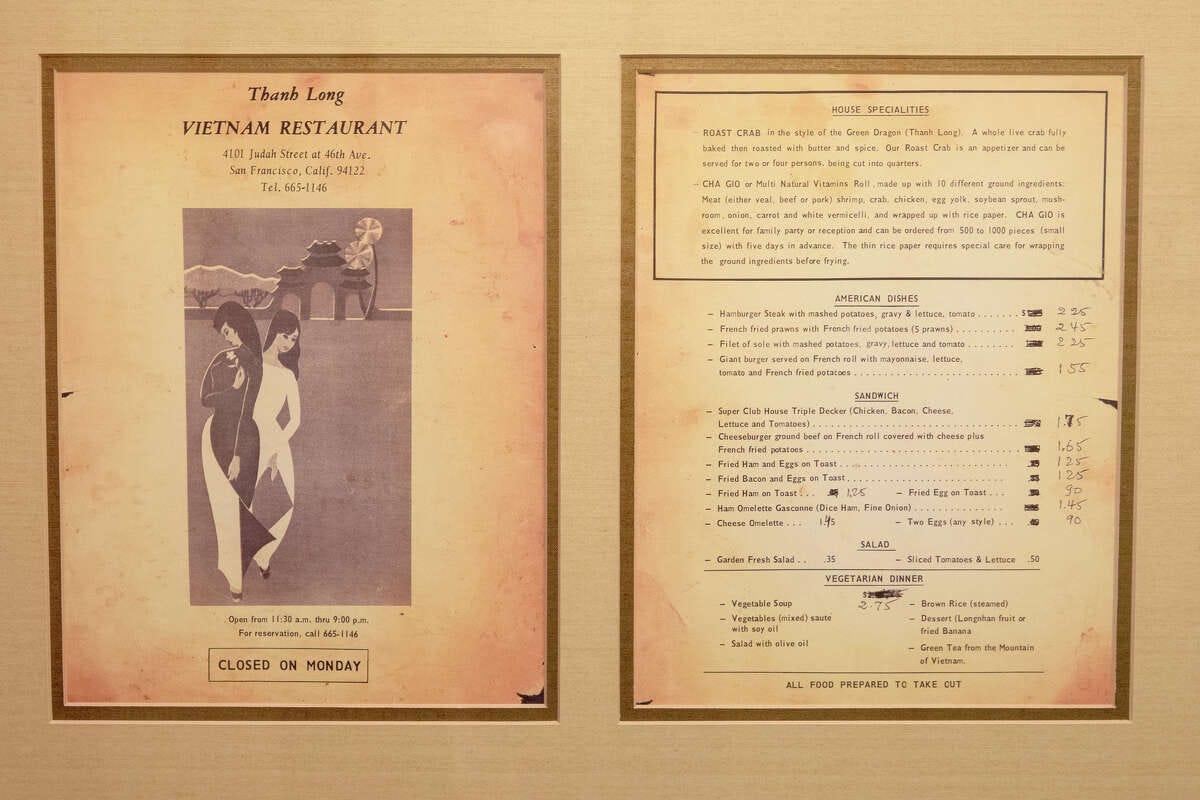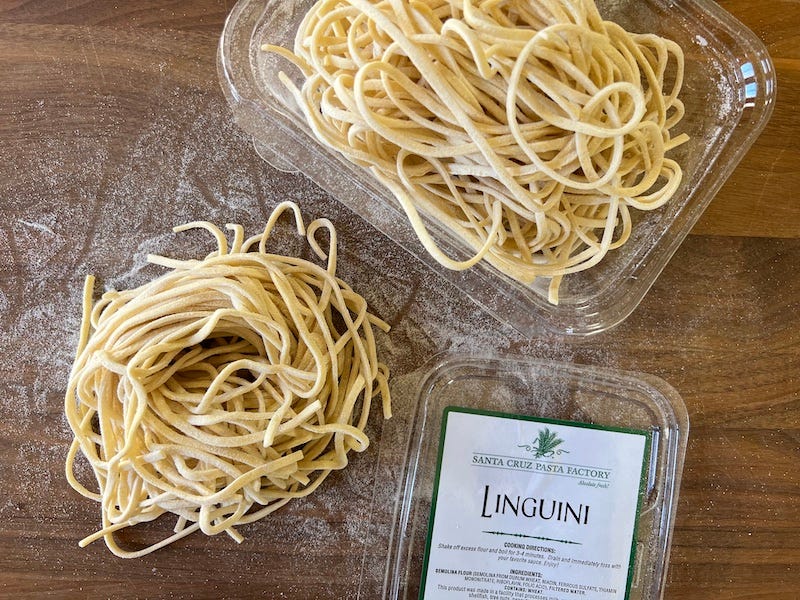Hello friends, this is the first installment of a deep-dive series on Vietnamese garlic noodles. If you don’t know what the cult-ish noodles are, let me start by setting the scene, with some history, of course! Food tastes better with context.
Each installment comes with a recipe, available to paid subscribers as part of their premium perk. Through this mini-series, I hope to share how I track the Viet food story and craft recipes to help others participate in that dialogue.
Before diving in, if you are interested in my upcoming tour, book events are listed and updated at Vietworldkitchen.com. I don’t want to persistently clog up PTFS with them. That said, Bay Area friends, come to the 4/25 launch event at Omnivore Books. I’m doing my first Smithsonian event on 4/30 so if you’re near D.C., join me!
Let’s now get noodly, shall we?
A week ago at the Los Angeles Smorgasburgh outdoor food market, I spotted a young person with beautiful cornrow braids, nattily dressed in a mustard colored sweatshirt, just-so loose denim jeans, and carefully selected sneakers. They stood at a high-top cocktail table staring down at a pile of garlic noodles topped with a split grilled lobster. The eater’s wardrobe matched the Instagram-worthy food, which came from the Lobsterdamus food tent.
I wanted to snap a food-and-fashion photo but honestly, the person looked somewhat puzzled: How to wield disposable utensils to tackle the $40 plate of food? It could be delicious fun or a minor disaster. Within minutes, they disappeared with the plate to (hopefully) occupy one of the picnic tables, which was lower and ergonomically better suited for leaning to deal with the lobster and noodles.
The situation caught my eye not only because of its modern urban beauty but also because it’s part of the Vietnamese food story in America. The very buttery and umami laden garlic noodles have Viet origins. When the noodles are paired with high-end seafood (lobster, Dungeness crab, giant prawns), it’s a splurgy, luxe, indulgent. What began as Viet-Franco food is Viet-American and a cross-cultural wonder for many, including Black Americans. There are legions of fans, including Kenji Lopez-Alt. But what’s the garlic noodle backstory?
Vietnamese Garlic Noodle Roots
Most people trace Vietnamese garlic noodles to the Bay Area’s Thanh Long restaurant. In 1969, Diana An, the family matriarch and a wealthy woman from Vietnam, was visiting a cousin in San Francisco. The two stopped for a sandwich at Sunset Joe’s, an Italian deli in the Outer Sunset neighborhood. Diana noticed a "For Sale” sign and bought the deli on a whim, according to her family’s cookbook, An: To Eat (2016).
I imagine that Diana also saw the writing on the South Vietnamese wall. The country was falling apart. She came from a well-connected, savvy family. She was likely looking for a way out.
In a 2023 interview of the An family, chef and daughter-in-law Helene says that Diana wanted a visa so she purchased the restaurant. When Diana returned to Vietnam and told her husband about her $5000 impulse buy ($40,000 in today’s money), he wasn’t into it. An independent woman, she packed up and returned to San Francisco to run the restaurant.
Diana named her restaurant Thang Long ("ascending dragon", the historic name of Hanoi) but a signage typo spelled it as Thanh Long ("green dragon"). Below are historic menus from 1971, obtained from here and here. The first menu lists the roasted crab and cha gio (imperial rolls) along with burgers and bacon and eggs.
The verbiage of the Vietnamese food menu is meant to charm and promise healthful eating (I like the slender, younger promise!).
Diana’s family members lost their wealth and position when they fled Vietnam in 1975. After joining her in San Francisco, the family, especially Helene, began pitching in and tweaking things to transition to a full Vietnamese menu. Entrepreneurial and looking to distinguish Thanh Long, Helene devised their signature buttery, pungent, cravingly good garlic noodles in 1978.
Thanh Long’s garlic noodles were popular enough but it didn’t really widely take off in the Bay Area until 1991, when a San Jose Mercury News restaurant review titled “Garlic Noodles Worth Marrying For” put the spotlight on the noodles. With the seafood on top, the garlic noodles signaled party time. It became celebration food, especially for Bay Area folks in the Black American community, who took a liking to garlic noodles in the 1980s. People would save up to splurge at Thanh Long or its fancier sister restaurant Crustacean in SF, according to a KQED story (disclaimer: Luke Tsai interviewed me for the article).
Decades later, Vietnamese garlic noodles are more than just a San Francisco treat. It’s a Vietnamese-American phenomenon. It is not traditional food which means you won’t find it at pho restaurants, but you’ll likely encounter it at Viet-Cajun spots — where the kids hang out, sort to speak. The buttery, garlicky, umami-laden noodles are also popular at Asian-American restaurants, Bay Area soul food spots, as well as a food markets like Smorgasburgh.
My First Tastes of Garlic Noodles
My experience with the noodles is different. When I think of garlic noodles, I don’t think of Thanh Long. I think about colonialism, class, and my after-school cooking experiments.
One of the classic Viet-Franco combinations involve Maggi Seasoning sauce, salty canned Bretel butter from Normandy, and a carb (rice or noodles). The French introduced Maggi (we pronounce it as “MAH-jee” not “Maggie” like the Rod Stewart song) and Bretel to Vietnam. Those who could afford the pricey imports swooned. In fact, I salivate thinking about melting a pat of the yellow cultured butter in a bowl of hot rice and sprinkling on Maggi. The umami richness was intoxicating, somewhat like a truffle buttered pasta.
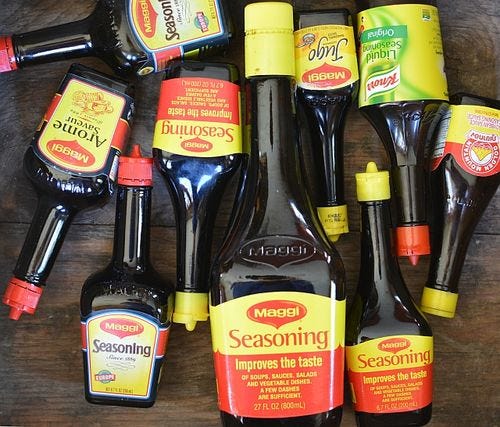
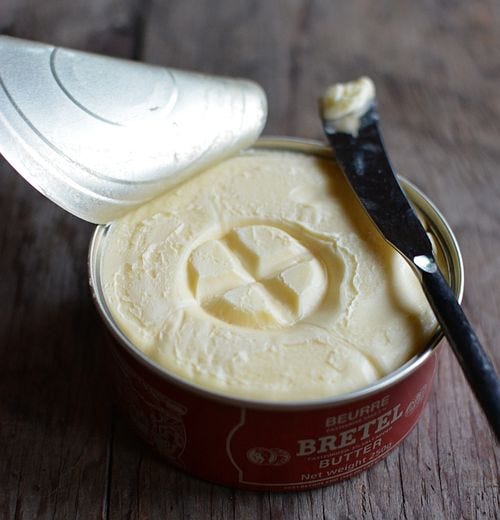
To this day, Maggi (the French version with extra MSG) and Bretel butter are cult ingredients to Vietnamese people of a certain age. When my family lived in Vietnam, we rarely had nui xào Maggi because all the ingredients, including Western noodles (called nui, the Viet phonetic equivalent of the French nouilles) were expensive.
After we resettled in America, Maggi, butter and egg noodles were more affordable (even though we were refugee immigrants, my parents knew what to splurge on). After I was old enough to be left alone in the kitchen, I tinkered with making Maggi butter noodles, adding a touch of garlic. They were fun and tasty, but honestly, not crave worthy for a junior high kid.
It didn’t dawn upon me to add more garlic until decades later, in the early 2000s when I ordered a garlicky buttery noodle dish at a Vietnamese French restaurant in Westminster, California, the grandaddy of Little Saigons in America. When I tasted those noodles, I recognized a grownup version of nui xào Maggi. I went home and developed my own recipe.
If you’re familiar with garlic noodles, where did you eat them first?
My First Garlic Noodles Recipe
You may assume that I know everything about Viet cooking but in 2004, when I tested and developed my garlicky Maggi butter noodles for my debut cookbook, Into the Vietnamese Kitchen, I had not tasted Thanh Long’s rendition. The An family recipe is a closely held secret. It told their story and I honored that. I wanted my noodles to tell my story — which was about the flavors of my Vietnamese experience. For that reason, my first Vietnamese garlic noodles recipe captured the synergistic combination of Maggi and fancy French butter — deliciously savory, fatty, fragrant. The garlicky note was a nod to Little Saigon and the Vietnamese immigrant story.
This past week, I test drove the 17-year-old recipe to verify its taste. It was still great, my husband said. I did notice that the pasta I used was on the firm-chewy side. I don’t know if it’s because they are eggless or they are formulated to be al dente. Because the seasoned noodles firm up as they are seared to build a nutty, umami finish, cook the noodles past al dente, to a tender-chewiness. Although you can cook about 6 ounces of dried pasta for this recipe, fresh linguine, fettuccine or Chinese noodles yield superior results.
To boost the health factor, before cooking the noodles in the pot, I blanched a bunch of asparagus in the pot of boiling water and removed them with tongs.
Now, dear readers, the awkward paywall moment has arrived. Paid subscribers may scroll on down to continue their garlic noodle odyssey. Free subscribers — it may be time to upgrade!


